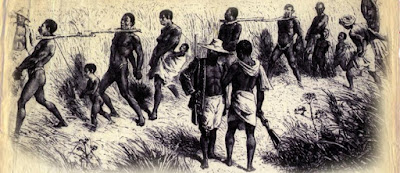Slavery ended in the colony of Santo Domingo, modern day Dominican Republic in 1822 with the arrival of Jean Pierre Boyer from Saint Domingue (Modern day Haiti). Before the time period of 1822 many of our ancestors are listed as the following. There are of course obstacle to this which is for one tracing back your genealogy before 1822 may be tricky in some places (like Santiago whose records where destroyed by the Spanish in the 1860s, so nothing pre-1860).
Important Definitions:
- Enslaved, usually listed as Esclavo or Esclava, or as Negro/Negra, or in combination of both i.e Negra Esclava or just Negra. Sometimes these ancestors can be listed as Moren@ Esclav@ by some priests/scribes who don't use the word negro at all, however when both Negr@ and Moren@ are present the first is used to refer to enslaved peoples. Sometimes for enslaved mixed people they are listed as Mulat@ or Pard@ esclav@.
I.E "Venta de una negra esclava llamada Juana, de nación angola, otorgada por Domingo de Frías Salazar a Damián Rodríguez" - Archivo Real de Bayaguana - Freed/Free, usually listed as Libert@, Libre, or simply listed as Moreno/Morena, in some cases listed as "Negr@ Libert@" when the individual was freed by an action. Additionally may be listed as Mulat@ libre if the person was mixed race or as Pard@, usually Pardo/Parda's where free folks.
I.E "Maria Contreras (Morena libre): Hija de Felipe Contreras y Isabel Mendoza" - Bautizmos de San Francisco de Macoris 1813-1841.
All Regions of the Dominican Republic:
- FamilySearch indexed records: Use this to search for your ancestors, but most of the time the search will not list their status, after finding out the exact date of event (marriage, baptism, death) you'd need to look them up manually.
- FamilySearch manual Catholic Church Records: These are the manual records in which your ancestors would have their status listed. Navigate by region, church, mostly written in script.
- FamilySearch manual Civil Records: You are less likely to find the status of your ancestors here but for some places like Santo Domingo and Moca there are pre-1822 civil records.
- Instituto de Genealogia Dominicana: Sometimes has entries that list the status of individuals, your ancestor could be in one of these capsules.
Regional:
Capital (Santo domingo and nearby areas)
- Libro de Bautizmos de Esclavos [1636-1670]
East
- Archivo real de El Seibo [1611-1932] - link coming soon -
- Archivo real de Higuey [1611-1932]
- Archivo real de Bayaguana [1607-1920]
- All the 3 available Archives are searchable here
Cibao/Linea
- San Francisco de Macoris 1812 Census
- Book: Expansion fundacional y desarollo del norte Dominicano [1680-1795]
- Book: La Colonizacion de la frontera Dominicana [1680-1795]
South/Southwest







Comments
Post a Comment